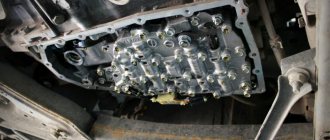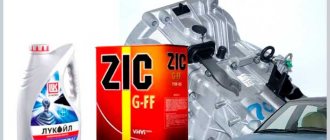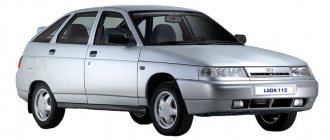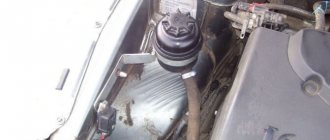Kia Rio 2 is a compact B-class car, produced from 2005 to 2011. It is the successor to the first generation Rio (year of manufacture – 2000-2005). The car was developed in two modifications - a sedan and a five-door hatchback. In 2009, an updated version debuted, created in collaboration with a design team led by Peter Schreyer. The car received an improved front end design in line with Kia's new corporate identity, and additional equipment also appeared.
The engine range remained unchanged - these are 1.4 and 1.6 liter petrol engines (95-112 hp), borrowed from the Hyundai Accent platform model (2005-2010). In addition, a 1.5-liter 110-horsepower diesel engine, coupled with a four-speed automatic transmission, was also available. On the Russian market, the second generation Kia Rio was offered only with a 1.4 liter engine. The main production was located in Korea, but the car was also produced in Ecuador, Indonesia, the Philippines, China and Slovakia. In addition, in the period 2006-2007. Rio II was produced at the Izhevsk Automobile Plant.
What kind of oil
When choosing transmission oil for the Kia Rio II, it is recommended to proceed from the model of gearbox installed in the car. You also need to pay attention to the type of oil and its classification, which the manufacturer recommends following when choosing the right oil.
In the case of the second generation Kia Rio, there is a single transmission model - a four-speed automatic A4AF3/CF1, coupled exclusively with a 1.4 petrol engine (95-97 hp). The original Hyundai-Kia ATF SP-III oil is suitable for this gearbox. Among the alternative options, you can consider the following lubricants:
- ZIC ATF SP-III
- Eneos ATF III
Functions of lubricants
Kia Rio transmission oil performs the following functions:
- protection of rubbing elements from wear;
- reduction of energy losses due to friction;
- heat sink;
- significant reduction in noise and vibration of gear wheels;
- reducing the shock load on gearbox elements.
Before checking the oil level in the manual transmission, you should place the car on a level surface.
After this, the following steps must be completed:
- Wait two minutes from the moment the engine is turned off.
- Allow the gear lubricant to cool.
- Prepare the necessary tools to open the neck.
- Lower the dipstick into the neck and determine the amount of liquid.
- Close the neck.
A manual transmission requires diagnostics of the lubricant level every ten to fifteen thousand kilometers. If there is a shortage of lubricant, add the required amount.
If there is a shortage of lubricating fluid in the gearbox system, the driver may notice:
- difficult gear shifting;
- heavy travel of the manual transmission lever;
- slipping when changing gear.
The service life of factory lubricant largely depends on driving style and external factors.
So, in order for the lubricant to last as long as possible, the following points must be taken into account:
- Newness of the car. On older car models, there are significant gaps in the manual gearbox, which contribute to the faster deterioration of the lubricant.
- Terms of Use. In the presence of cold winters, condensation enters the lubricant and worsens its viscosity properties.
- Best before date. Each lubricant has its own expiration date, after which the antifriction parameters begin to decline.
What oil filter
The four-speed automatic A4AF3/CF1 requires oil filter 4632123001 . In addition, after each oil change, it is recommended to change the drain plug gasket (2151321000) and pan sealant (Loctite).
Is it worth installing a new filter?
The filter is changed along with an oil change, so the need for a new filter inevitably arises. A used element is usually contaminated with tiny wear particles, which are almost impossible to wash off. Thus, if you install the old filter back and at the same time fill in new high-quality oil, then you should not expect any benefit from it. In the near future, such a liquid will turn black and become unusable due to the fact that the old filter element is not able to retain metal particles and other dirt deposits.
Recommended oil for machine
For Kia Rio II with automatic transmission, transmission oil with ATF SP III approval is recommended. The lubricant can be from any manufacturer, for example Hyundai SP-III, Mitsubishi SP-III, ZIC SP-III, etc.
The first thing you need to pay attention to is the cost and opt for a more affordable oil, which is no worse than a more expensive product with the same approval.
What kind of oil was poured in from the factory?
From the factory, the Kia Rio II four-speed gearbox was filled with transmission oil with ATF SP-III, made on a hydrocracking base with an optimal set of antioxidant and cleaning additives that protect the transmission from oxidation, foaming and ensure viscosity-temperature stability inside the gearbox until the next oil change .
Characteristics of ATF SP III using the example of Mitsubishi Diamond
- Color – transparent
- Viscosity at 40 degrees (kinematic) – 35.4 mm sq./sec
- Viscosity at 100 degrees (kinematic) – 7.4 mm sq./sec
- Flash point in an open crucible – 196 degrees
- Pour point – minus 40-50 degrees
- Density at 20 gr. – 850-853 kg/cubic. m
- Viscosity index – 150-179
Sequence of work
- Warm up the engine, drive the car onto an overpass, turn off the ignition, and move the automatic transmission selector to neutral mode
- Open the hood, find the filler plug, unscrew it, pull out the dipstick
- Go under the bottom of the car and unscrew the drain bolt. By the way, before this you need to prepare a pan for draining the oil in advance. After unscrewing the bolt, liquid will gradually pour out. Please note that for best access to the drain hole you will have to remove the pan that holds the gearbox
- After draining the oil, tighten the bolt back, then install a new oil filter.
- Using a special syringe, pour in new transmission fluid. This must be done through the main hole located in the engine compartment of the car. A funnel will also work instead of a syringe. You can make it using a regular plastic bottle - to do this, you need to cut it in half lengthwise
- After adding oil, you need to wait a few minutes until it flows down the box. Then start the engine and let it idle. At this point, you can switch the gearbox to different positions so that the lubricant is better distributed throughout all components
- Stop the engine and check the fluid level. There are special Max and Min marks on the dipstick for this.
- If necessary, re-tighten all screw connections to avoid oil leaks. At this point, the process of changing transmission oil in the Kia Rio 2 automatic transmission can be considered complete.
What do drivers choose? Top 5
Since the Kia Rio 2 is a used car without a warranty, its owners can choose a relatively inexpensive alternative gear oil that must meet the specifications and characteristics of the original fluid. In most cases, you should start from the SP-III tolerance, which corresponds to the following lubricants:
1.Totachi ATF SP-III
This is a Japanese-made oil that has a synthetic base and meets the SP-III specification
2.Idemitsu ATF Type-HK
This is a synthetic oil suitable for cars of various brands, including Hyundai. Since this oil is not interchangeable, before purchasing it you need to pay attention to the product number suitable for a Kia or Hyundai car
3.Chevron ATF
Chevron ATF is the best option for those who need a high-quality and relatively inexpensive product that is no worse than original oils such as Mitsubishi Diamond and Hyundai Genuine SP. Moreover, this fluid is universal and compatible not only with automatic transmissions, but also suitable for hydraulic drives and power steering
4.Eneos ATF SP III
Eneos ATF SP III is one of the best oils on the market, produced by JX Nippon Oil & Energy Corporation. This lubricant is produced in different countries depending on the market. For example, the Russian version of Eneos ATF SP III is supplied from South Korea. This oil is significantly different from the Japanese spill, since it is oriented to Russian operating conditions and is compatible with domestic fuel
5.ZIC ATF SP III
ZIC ATF SP III is one of the products from the SK Lubricants plant, developed according to Mitsubishi quality standards. Given the Hyundai/Kia SP-III approval, this oil is ideal for Hyundai and Kia vehicles. Moreover, ZIC ATP SP III was poured into the Rio II gearbox straight from the factory for some time.
When to change the oil
In most cases, the automaker does not recommend changing transmission oil, arguing that it is designed for the entire service life. But in some cases, the lubricant must be replaced if severe operating conditions require it. To understand the situation, below is the frequency of oil changes depending on environmental conditions, as well as the year of manufacture of the car.
| Conditions: operation in northern regions with frosty winters and damp climate | Oil change schedule - 40-60 thousand km |
| Conditions: operation in regions with a temperate climate and relatively smooth roads, including countryside, as well as careful driving in a metropolis without cold and sudden starts | Oil change schedule - 50-80 thousand km |
Why is it so important to observe the interval between the first and subsequent oil changes?
1. The frequency of replacement directly depends on the mileage traveled and conditions. Based on this, it is necessary to select the optimal regulations. As a general rule, the colder the climate and the more severe the driving conditions, the shorter the fluid change interval. However, there are exceptions when changing the oil in an automatic transmission is a useless procedure after five to six years of the car being idle in a garage or in a parking lot. In this regard, it is recommended to change the oil on time in accordance with technical regulations
2.Frequent oil changes are indicated in the following cases:
- the car is subject to high loads, especially if the oil level in the box is low
- daily trips on unpaved roads, including country roads
- driving in city traffic jams, which cause an equal driving rhythm: you have to brake and accelerate every five to ten seconds
- driving on slippery and icy roads with slipping
- constant operation in conditions with a variable climate, as well as extremely low and high temperatures, at which the oil does not have time to heat up or, on the contrary, is subject to overheating. As a result, the beneficial properties of the oil are lost ahead of time.
- Failure to change the oil in a timely manner can lead to problems and breakdowns in the hydraulic system of the machine, which will be annoying with jolts, jerks and untimely gear changes.
Problems due to bad oil
- Lack of pressure in gearbox units
- Failure to properly lubricate the mechanical elements of the gearbox
- Overheating and dry friction of parts due to their insufficient cooling
How to determine the quality of oil by color
Over time, natural wear of transmission parts occurs, and their small particles enter the circulating lubricant and pass through the entire surface of the gearbox, thereby contaminating it. These particles include metal dust and small foreign particles that clog the oil filter. If you don’t have the time or money to contact a service center, then you can determine the condition of the oil by its color:
- Pink color indicates the presence of water in the transmission
- The red color of the liquid means that there is nothing wrong with it and it is still in good condition.
- Dark red color indicates minor dirt and minor wear
- The appearance of a brown color is a sign that the oil is no longer suitable for use due to a large amount of dirt deposits
- By the black color of the oil, you can understand that it has not been changed for a long time, which can cause technical problems not only in the gearbox, but also in the engine
Functions of lubricants
Kia Rio transmission oil performs the following functions:
- protection of rubbing elements from wear;
- reduction of energy losses due to friction;
- heat sink;
- significant reduction in noise and vibration of gear wheels;
- reducing the shock load on gearbox elements.
Before checking the oil level in the manual transmission, you should place the car on a level surface.
After this, the following steps must be completed:
- Wait two minutes from the moment the engine is turned off.
- Allow the gear lubricant to cool.
- Prepare the necessary tools to open the neck.
- Lower the dipstick into the neck and determine the amount of liquid.
- Close the neck.
A manual transmission requires diagnostics of the lubricant level every ten to fifteen thousand kilometers. If there is a shortage of lubricant, add the required amount.
If there is a shortage of lubricating fluid in the gearbox system, the driver may notice:
- difficult gear shifting;
- heavy travel of the manual transmission lever;
- slipping when changing gear.
The service life of factory lubricant largely depends on driving style and external factors.
So, in order for the lubricant to last as long as possible, the following points must be taken into account:
- Newness of the car. On older car models, there are significant gaps in the manual gearbox, which contribute to the faster deterioration of the lubricant.
- Terms of Use. In the presence of cold winters, condensation enters the lubricant and worsens its viscosity properties.
- Best before date. Each lubricant has its own expiration date, after which the antifriction parameters begin to decline.
When is the best time to change the oil?
The car's operating instructions usually contain all the information regarding the oil change interval. Therefore, if for some reason a car owner cannot determine the most appropriate replacement schedule depending on operating conditions and oil condition, then it is recommended to strictly follow the manufacturer’s recommendations. However, if the instructions are lost and the user still cannot find the information he needs, then you can use standard measures that are suitable for most cars:
- To check the oil level, just lift the dipstick and look at it. If the level is insufficient or the fluid is just beginning to darken, then it should be replaced after 20 thousand kilometers
- If knocking or hesitation occurs in the automatic transmission, it is recommended to once again check the quality of the oil.
- If you do not want to check the oil level and condition yourself, you should visit the nearest service station, which, using special devices, will assess the feasibility of replacing the lubricant.
Change of oil
Partial or complete replacement
Timely replacement of the oil in the machine guarantees its proper operation throughout the entire operation of the vehicle. Fresh lubricant eliminates the possibility of dry friction between gears, and also contributes to effective cooling of mechanisms and their protection from premature wear. Used oil, on the contrary, does more harm than good: it is not able to cool transmission parts and protect them from wear, as a result of which the box does not work properly and may fail ahead of time. To avoid unpredictable problems, first you need to read the operating instructions for this gearbox. Typical instructions usually provide two ways to change the oil.
Features of partial oil change
- Partial replacement is a procedure that includes draining some of the used fluid (within 40-60% of the total), after which new oil is added to the required level
- For a partial replacement, 3 to 5 liters of oil are required, depending on how much old fluid has spilled out
- With a partial replacement, there can be no talk of any financial savings, since this is a more frequent procedure (compared to a complete replacement), which, in the best case, should be carried out no more than after 50 thousand kilometers
- With a partial replacement, the need to replace the oil filter is not always provided for, which is a disadvantage. After all, as mentioned above, replacing the filter is a guarantee that the recently filled in new oil will not become unusable ahead of time
- Despite a number of disadvantages, a partial replacement also has a number of advantages: - one refueling requires less oil - the cost of this service in a service center is less than with a full replacement - a partial replacement also includes cleaning the pan and filter system, if required by regulations - minimal risk break the transmission mechanisms, since in-depth intervention in the box during maintenance is not required
Features of a complete oil change
- A complete replacement is a procedure that includes flushing the transmission until the remaining old oil is completely removed from the gearbox and cooling circuit. Also during this procedure, all consumables are changed and new oil is added.
- A complete replacement is performed at a service center using a special device that is connected to the gearbox to supply flushing fluid. Thus, the entire system is completely cleaned
- This procedure requires 30-50% more new oil than stated in the factory recommended fluid volume. Therefore, it makes sense to completely replace it only in difficult operating conditions or with high mileage.
- The advantages of a complete replacement versus a partial one are obvious: - after a complete replacement, the box is completely cleaned and does not contain any dirt deposits - after this procedure, the box works much better, without any jerks or hesitations not provided for by the design features - less fuel consumption due to the fact that new oil contributes to better operation of the torque converter - a complete replacement involves the systematic removal of debris from the sump
Based on the above, you can decide on a partial or complete replacement only on the basis of the manufacturer’s recommendations set out in the operating instructions. It is also important to proceed from the current state of the gearbox and the environmental conditions in which the car is located most of the time. Therefore, there is no clear answer as to which replacement is most preferable - complete or partial. Alternatively, a partial replacement is suitable for regular oil changes, if the car owner has time for regular replacement. Or vice versa, with long mileage, you can limit yourself to a complete replacement, if only favorable operating conditions allow it.
How much oil is in a Kia Rio manual transmission?
First generation DC, 2000-2005
The 1st generation Rio had two body styles - a sedan and a hatchback, the latter resembling a station wagon, as was the case with the Subaru Impreza GF. In general, the streamlined design of the car turned out to be successful thanks to original solutions, and without any borrowings, unlike the “Chinese” of that time. And in 2003, restyling took place, which affected the updating of the front part of the body and interior elements. As a result, the interior has become more comfortable and functional. The engine range still consisted of a 1.3 liter (75 hp) petrol engine intended for Europe. At the same time, in Russia they produced a version with a 1.5 liter engine (98 hp), while in the USA the car was available with 1.5 and 1.6 liter engines (98-106 hp). In Korea, the first generation Rio was equipped with 1.3 (84 hp) and 1.5 liter (105 hp) engines.
Also read: Oil for manual transmission Renault Logan
Manual transmission oil: volume – 1.9-2.0 liters with partial replacement
Second generation JB, 2005-2011
In the second generation of Rio there were two body types - a sedan, and the second version became similar to a hatchback (and not a station wagon, as in the previous generation). The new appearance has benefited the Rio in terms of practicality and capacity, given the rather tall body. In addition, the wheelbase has increased (2500 versus 2410 mm previously), and the body length of the sedan was 4240 mm (previously 4215 mm). The height of the car increased by 30 mm (1470 mm). Thus, Rio has become larger and more spacious in all respects. The quality of the interior trim has been improved, new options and comfort elements have been added. At the same time, the developers paid attention to safety, which was confirmed in the EuroNCAP crash test, in which the car received four stars for passenger protection. The engine range included gasoline internal combustion engines with a volume of 1.4 and 1.6 liters (97-112 hp), operating with a manual or automatic transmission.
Manual transmission oil: volume – 1.9-2.0 liters with partial replacement
Third generation QB, 2011-2016
The 2011 Rio received a new sporty design, developed by a team of artists of Peter Schreyer, with whom Kia began collaborating back in the days of the 2nd generation Rio. The model was based on the platform from the Hyundai i20 hatchback, as well as the first generation Solaris. Despite its stylish and streamlined appearance with dynamic shapes, Rio III looked more austere in comparison with the same Solaris. The main signature feature of the new model was the pointed headlights and the “evil” radiator grille with chrome trim. This image even evoked associations with the more expensive 2008 Kia Cerato. The sedan and hatchback of the same name had the engine range from Solaris - petrol 1.4 and 1.6 (from 107 to 122 hp), working with a manual or 4-speed automatic. After restyling, a 6-speed automatic became available.
Also read: Oil for manual transmission Skoda Rapid
Manual transmission oil: volume – 1.9-2.0 liters with partial replacement
Fourth generation FB, since 2016
The 4th generation Rio debuted on the Russian market on August 1, 2017. The car rolls off the assembly line in St. Petersburg. This modification, compared to the European one, has an increased wheelbase, a different engine range and improved chassis settings. Moreover, a “bad roads” package is provided. In general, this car is better adapted to bad road conditions and is better prepared for cold climates. From a design point of view, the car has much in common with the 2nd generation Solaris platform, especially in the design of the side doors. At the same time, the design of the front and rear parts is stylized to match the new corporate look of the Kia model range. Engineers have improved handling and safety, improved the quality of the front panel and added multimedia functions. The increase in wheelbase (+30 mm, 2600 mm) took place in the space in the rear row. The 4th generation Rio engine range consists of updated 1.4 and 1.6 liter engines operating with a six-speed manual transmission or automatic transmission.
Manual transmission oil: volume – 1.9-2.0 liters with partial replacement











